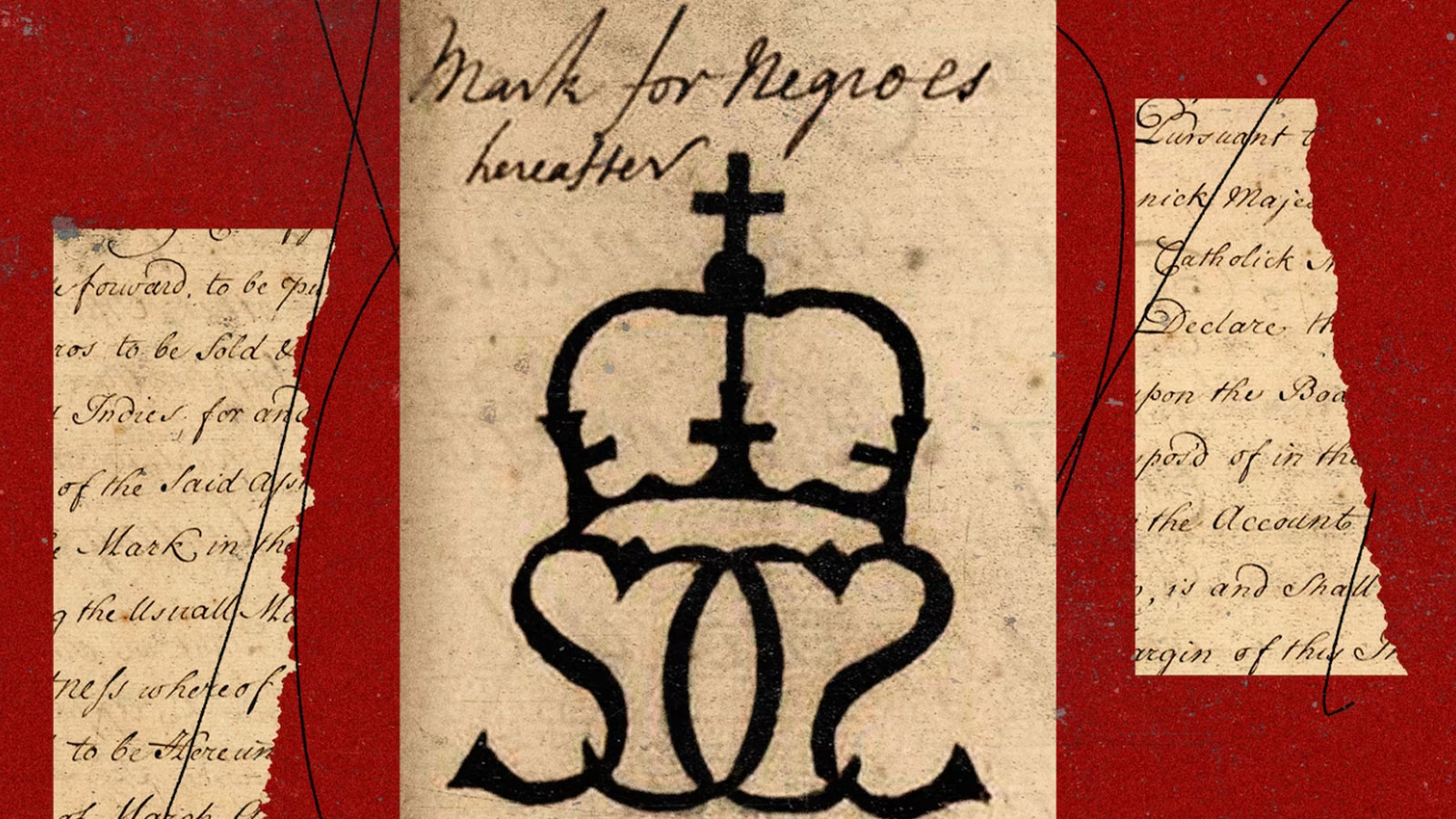Documents found by a British researcher and republished by The Washington Post show evidence of the monarchy’s intimate role in the transatlantic slave trade.
By Karla Adam, The Washington Post —
Thumbing through the tanned pages of centuries-old records in the basement of the British Library, Nicholas Radburn came across an illustration that took him aback.
A crown resembling the iconic St. Edward’s headpiece from British coronations sat atop the letters S and C, apparently a stylized reference to the slave-trading South Sea Company. The accompanying text, written in 1715, declared that this was “the Mark henceforward, to be put upon the Bodys of the Negros to be sold & Dipos’d of in the Spanish West Indies,” under a contract between Britain’s late Queen Anne and Spain’s King Philip V.
“It was striking,” said Radburn, a historian at Lancaster University, who discovered the illustration as part of a project to digitize the records of the South Sea Company and its monopoly over the trade of enslaved Africans to the Spanish-held Americas.
Hot-ironing initials into the flesh of captives was a horrid but common practice in the era of the transatlantic slave trade. These brands were used to establish ownership claims, as a means of identification, for accounting purposes and to regulate sales.
Yet here was a highly unusual rendering of a brand that featured royal insignia, establishing a vivid link between the British monarchy and the slave trade.
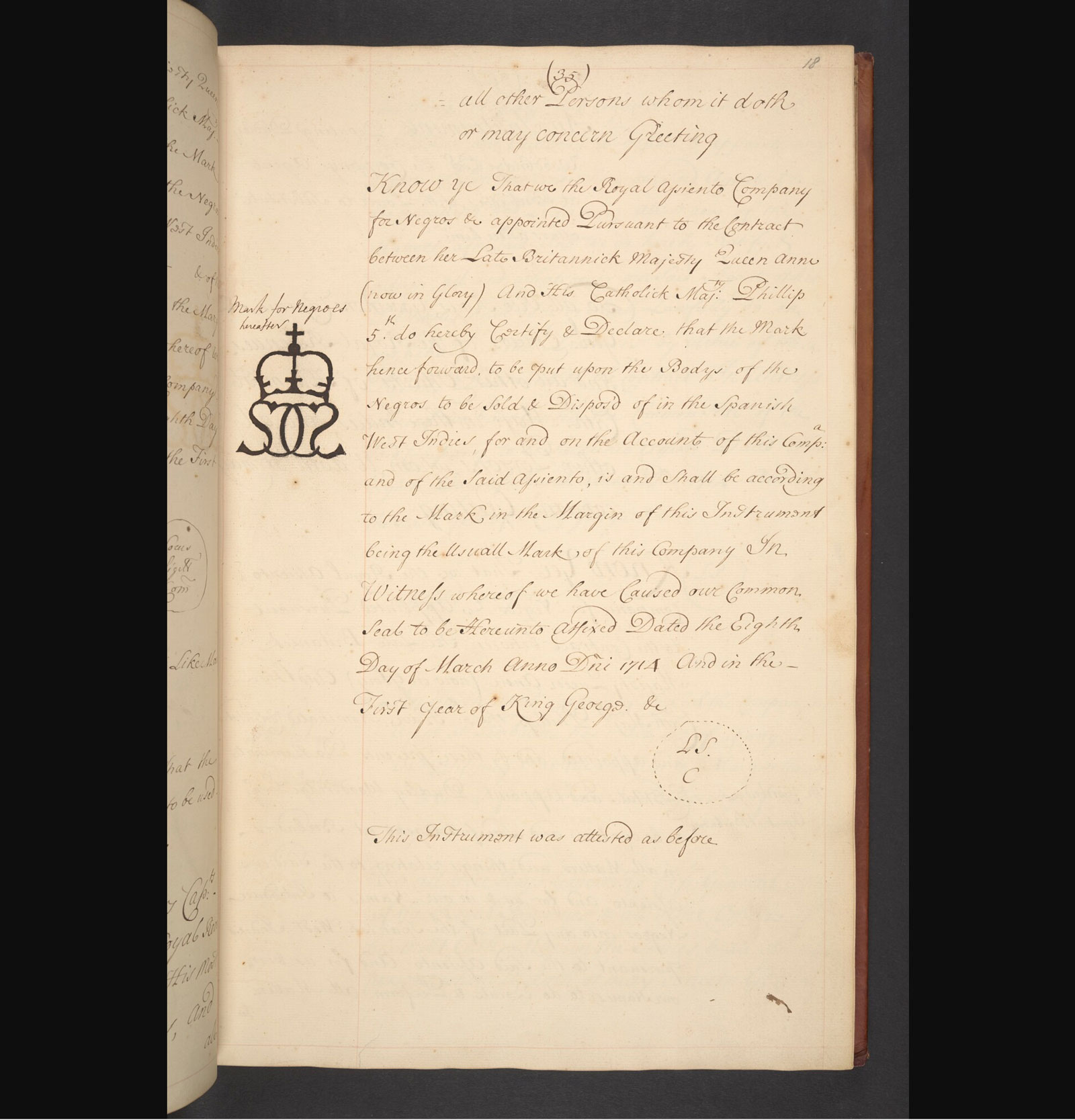
This document, found in South Sea Company archives, codifies that this brand is to be used on enslaved people traded in accordance with the “asiento,” or agreement between the late British Queen Anne and Spain’s King Philip V. Because of England’s mid-18th-century transition from the Julian to the Gregorian calendar, the document can in fact be dated to 1715. (Courtesy of the British Library Board, add_ms_2557, f018r)
“This clearly demonstrates the close connection between the crown,” Radburn said, “be it Queen Anne personally or the institution more broadly — with the South Sea Company and its activities, in this case, enslaving and branding people.”
The Washington Post, with permission from the British Library, is the first to publish the documents in which the drawing of the brand appears. Asked about the illustration, Buckingham Palace said in a statement to The Post, “This is an issue that His Majesty takes profoundly seriously.”
King Charles III has not apologized for his predecessors’ role in the slave trade, as Dutch King Willem-Alexander did in the summer. Instead, Charles has expressed “my personal sorrow at the suffering of so many.” And he has signaled support for research on the British monarchy’s historical links to slavery.
The broad outlines of that history were already known: For 270 years, British kings and queens, as heads of state, oversaw a commercial enterprise that denied people their basic humanity and condemned them into bondage, sending them across an ocean to be exploited for their labor — though thousands died as a result of the brutal conditions of the passage.
But new investigations, based on records scattered in libraries and archives on multiple continents, are revealing that successive British monarchs played a more intimate role than previously recognized, reaping profits that continue to benefit British royals today.
Historian Brooke Newman of Virginia Commonwealth University discovered a 1689 document, republished by the Guardian in April, showing that King William III, who built Kensington Palace, profited from a free transfer of shares in the Royal African Company given to him by a notorious slave trader, Edward Colston.
London-based researcher Desirée Baptiste found documentation that a direct ancestor of King Charles III purchased at least 200 enslaved people to support his tobacco plantation in Virginia.
Such discoveries are providing a paper trail for those calling for a reckoning in Britain and beyond about the legacy of colonialism. The findings may also figure in debates in some of the remaining Commonwealth realms about whether to continue to recognize the British monarch as their head of state.
“All the trappings [the British royals] claim — palaces, art, and the ceremony and pomp that goes along with it — have to be tempered with the other side of history that is not as positive or laudatory,” Radburn said.
The specific research that Charles has facilitated involves royal archive access for a PhD student, Camilla de Koning.
De Koning, who is about a year into her work, said she has uncovered documents that show “kings and queens weren’t just figureheads” in the slave trade.
Examining Queen Anne’s personal correspondence, she concluded that Anne’s skillful diplomacy was “crucial” in Britain being awarded the “asiento,” or contract from Spain to transport 4,800 enslaved Africans per year to the Spanish colonies.
“The contract is not given to the British people, it’s not given to the South Sea Company, it’s given specifically to Queen Anne as a thank-you for her peacemaking abilities,” De Koning said.
Anne delegated the contract to the South Sea Company, but she maintained a little under a quarter share of the company and was granted one 500-ton tax-free vessel for “general trade” in the Spanish Americas, something that was otherwise prohibited.
“People always say that she was fat and stupid. … She’s really not,” De Koning said. “She was very involved.”
Anne died and was succeeded by George I not long before the South Sea Company documented that it was branding slaves with a crown.
Specialists in that historical period say it is exceptional to find an original record in British archives of a brand with royal symbols.
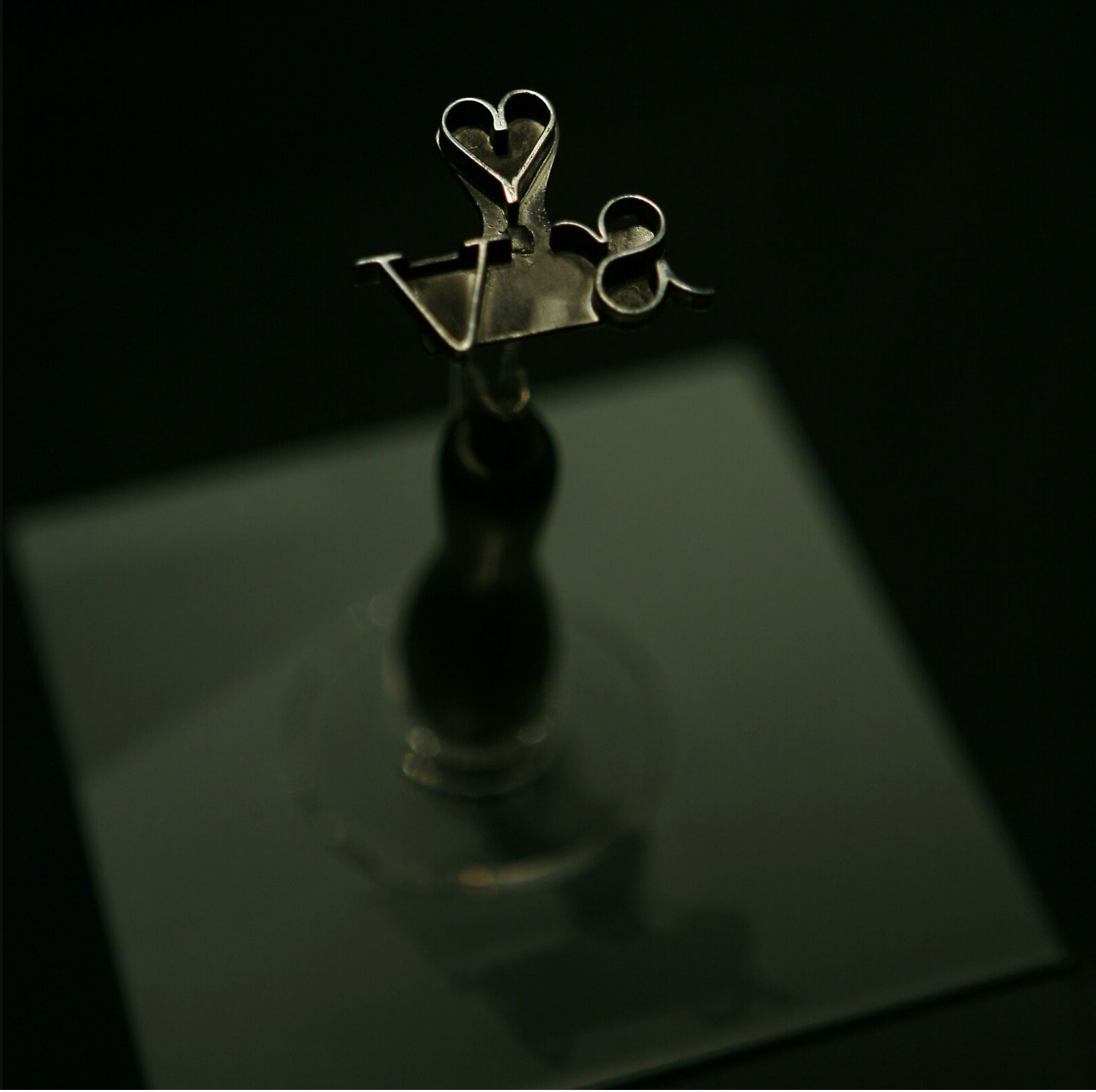
A replica branding iron on display at the International Slavery Museum in Liverpool, England. (National Museums Liverpool)
None of the branding iron replicas on display at the International Slavery Museum in Liverpool include royal initials or motifs. Curator Alexander Scott said he was aware of reports that enslaved Africans were branded with the initials DY, for Duke of York, when the future King James II held that title and oversaw the trafficking conducted by the Royal African Company. But Scott has only seen references to that practice in secondary documents written decades later.
Several British researchers interviewed for this article said it was plausible that “DY” was used, but they had yet to find definitive proof. Newman said she will reveal evidence in her upcoming book, “The Queen’s Silence,” that some enslaved Africans were branded with “RACE” to denote the Royal African Company of England.
The illustration Radburn found stands out in that it is described in a contemporaneous account and appears to reference not just British nobility but the sovereign in particular.
The extent of the brand’s use is unknown. Additional company records Radburn examined indicate that company representatives used the brand in Jamaica and possibly Barbados. Enslaved Africans were marked there to denote who was to be taken to Spanish colonies as opposed to being sold locally.
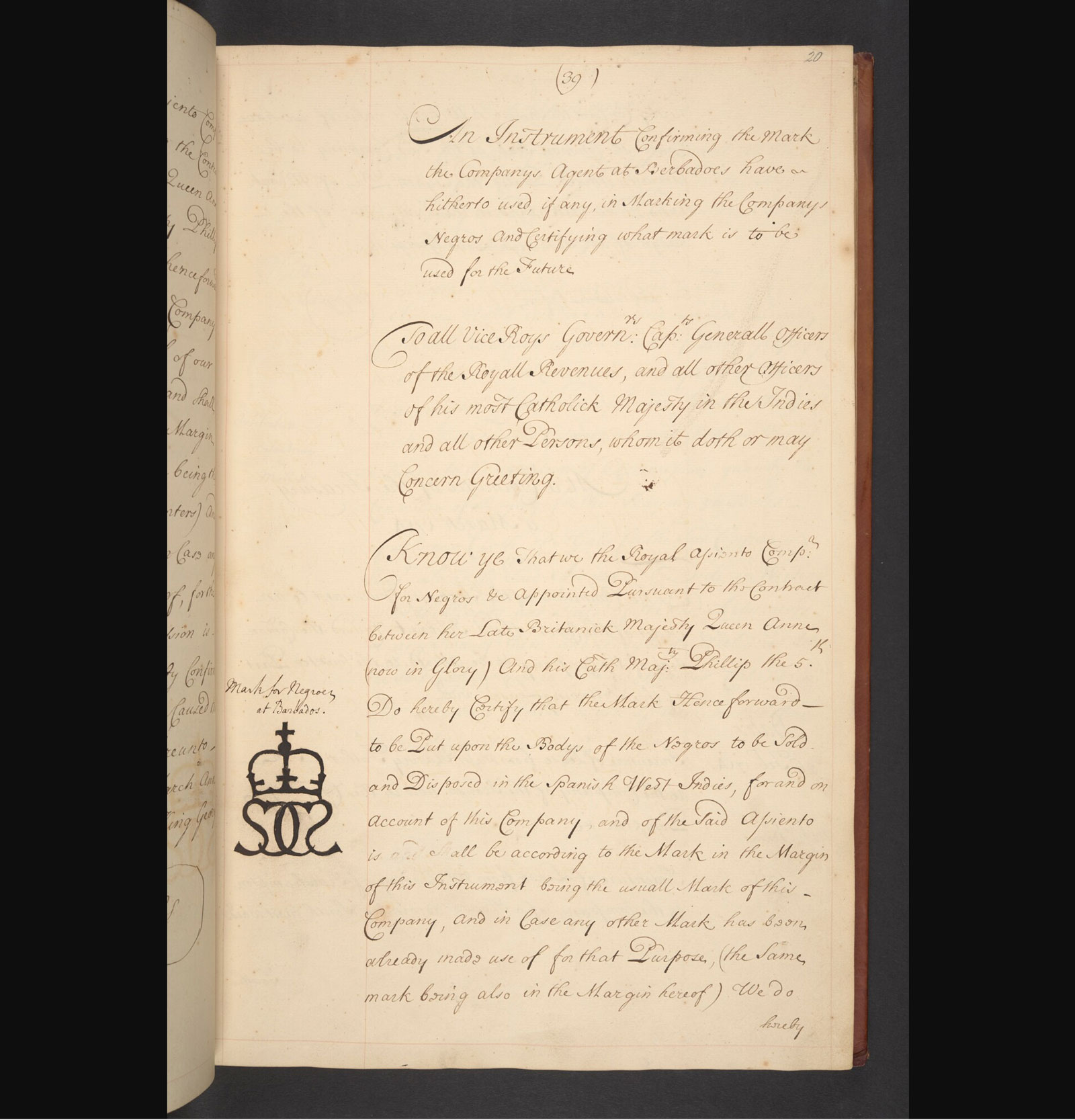
In the South Sea Company records on the same date, a body known as the Committee of Correspondence orders that the company’s agents have a brand made to match the mark already used on enslaved people being transported through British colonial holdings. (Courtesy of the British Library Board, add_ms_2557, f020r)
Why double Cs and not just SSC for South Sea Company? Double and reversed letters were sometimes used for visual effect — a brand for Cartagena, for instance, used similar double Cs. But Radburn theorized that the interlocked Cs here also could have represented the agreement between the Spanish and British crowns.
Is it possible that the illustrated crown represented the Spanish monarchy? There were Spanish brands that included crowns — along with initials referencing the royal treasury, “his majesty” or companies trading under the Spanish flag. But scholars of the period said those crowns tended to be depicted differently — with arches, like in the Spanish coat of arms used today. And to the extent that the SSC brand would have confirmed which entity had a legal permit to bring the captives to the Americas, the reference would have been to the British crown.
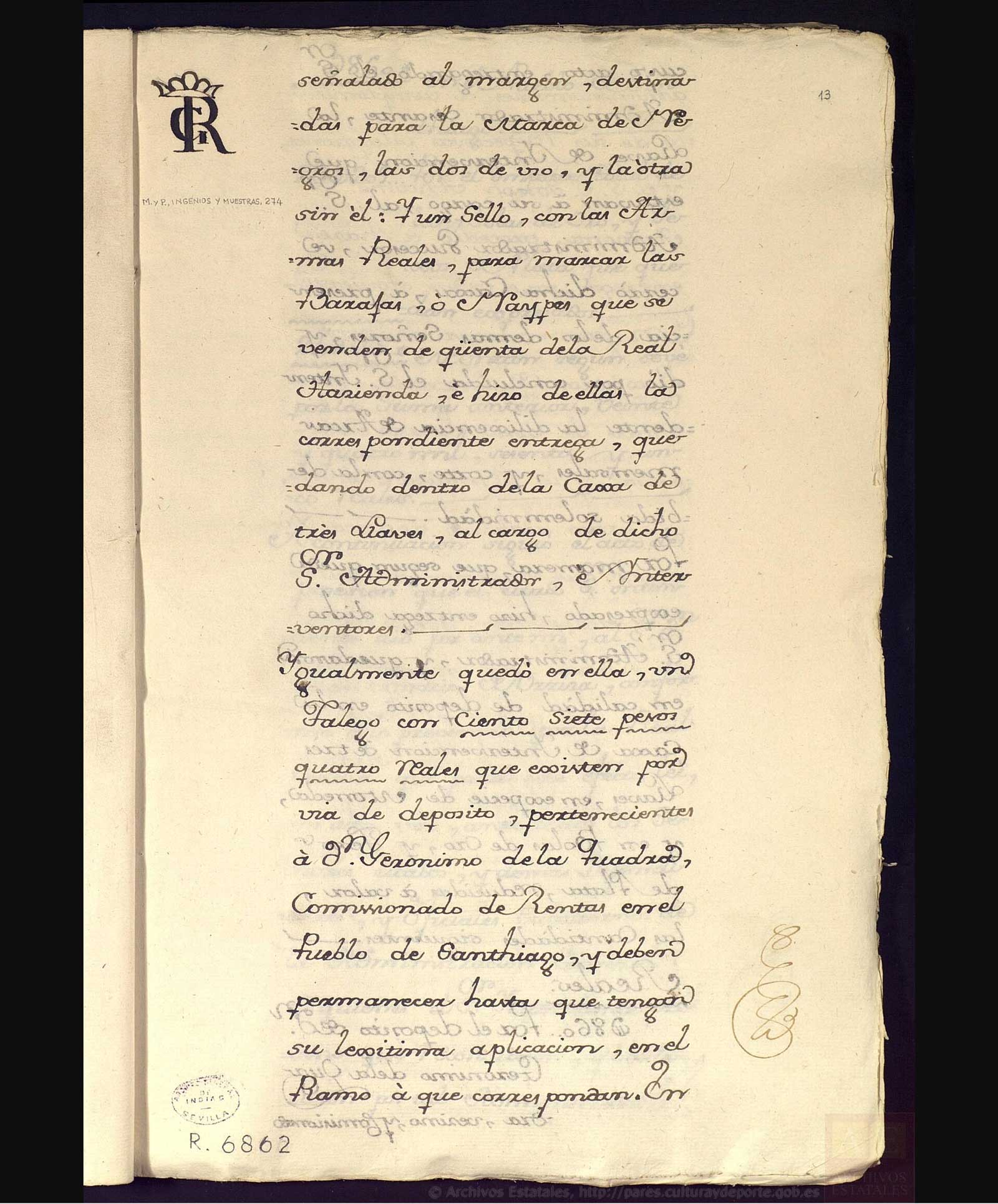
The depiction of the Spanish crown is notably different in this mark, branded on enslaved people by the Cadiz Slave Company, which traded under the Spanish flag in the 18th century. (Original in the Archivo General de Indias, catalogue number MP-INGENIOS, 264.)
“Nothing in the brand used by the SSC … has any connection with pictorial representations or acronyms related to the Spanish monarchy of the time,” said Alex Borucki, a historian at the University of California at Irvine.
Borucki said he was familiar with a simplified version of the same brand — a version documented to have been used on enslaved Africans arriving in Cuba in 1717.
He noted that Spanish records produced in the Americas show that people enslaved and traded as part of the agreement between Britain and Spain were branded on the back with the SSC mark and on the chest with a Spanish royal mark.
“This is gruesome, I know, and it is always worse than you imagined,” he said. “Like, you thought enslaved Africans had to endure one mark — well, they had to go through this twice.”
Edmond Smith, a historian at the University of Manchester, said that the discovery of the brand in the South Sea Company records — like other kinds of physical evidence, including iron rods or shackles — helps to highlight the “horrors of the transatlantic slave trade and really bring it to life. … We can talk about the transatlantic slave trade in terms of millions of people, but that can somehow bizarrely diminish the emotional impact.”
Newman, the Virginia-based historian, said the brand was emblematic of royal involvement.
“It’s not just even that they invested in these companies and made dividends off of or got customs revenue,” she said. “It’s that they were willing to have their brand literally branded into the flesh of people. This was because, at the time, the slave trade was seen as the way to build an empire and the way to make money to funnel money back into the royal pocketbook.”
Source: The Washington Post
Beatriz Ríos contributed to this report.
Karla Adam is a London correspondent for The Washington Post, which she joined in 2006. She is a former president of the Association of American Correspondents in London.
Featured image: (Washington Post illustration; Courtesy of the British Library Board, add_ms_2557, f018r; iStock)


